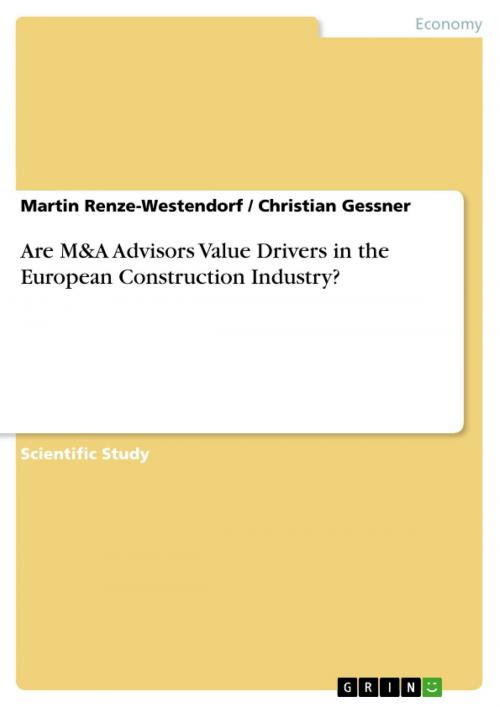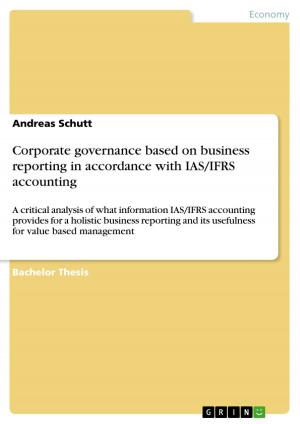Are M&A Advisors Value Drivers in the European Construction Industry?
Business & Finance, Finance & Investing, Finance| Author: | Martin Renze-Westendorf, Christian Gessner | ISBN: | 9783638527774 |
| Publisher: | GRIN Publishing | Publication: | July 29, 2006 |
| Imprint: | GRIN Publishing | Language: | English |
| Author: | Martin Renze-Westendorf, Christian Gessner |
| ISBN: | 9783638527774 |
| Publisher: | GRIN Publishing |
| Publication: | July 29, 2006 |
| Imprint: | GRIN Publishing |
| Language: | English |
Scientific Study from the year 2006 in the subject Business economics - Investment and Finance, grade: 1,0, European Business School - International University Schloß Reichartshausen Oestrich-Winkel, 25 entries in the bibliography, language: English, abstract: Over the last decade, there is an increasing involvement of financial advisers in European M&A-transactions. Since 1995 the involvement of M&A-advisers in transactions with European participation has more than doubled (16.4% in 1995; 34.7% in 2005). In approximately a quarter of all deals (mean percentage of deals from 1995-2005), M&A-advisers were involved. This raises the questions whether companies hiring M&A-advisers are better off and whether M&A-advisers can be seen as value drivers. The aforementioned questions have been rarely examined in empirical research. Furthermore, most of the existing studies focus on the US-American M&A-market. There has been little research on the European M&A-market and no research at all on the European construction industry in particular. Thus, the paper's purpose is to examine the question whether M&A-advisers are value drivers in the European construction industry. In the first part of this paper relevant theoretical concepts (2.1) are presented, existing literature is reviewed (2.2) and the research hypotheses are derived from theory (2.3). In the empirical part of the paper, the selection of the data sample (3.1) and the event study methodology (3.2) are first described. Then, the four hypotheses (adviser involvement, adviser reputation, negotiation effect and number of adviser involved) are tested followed by the multivariate analysis and the combined entity analysis (3.3). The paper is concluded by a summary of the findings including implications for further research (4).
Scientific Study from the year 2006 in the subject Business economics - Investment and Finance, grade: 1,0, European Business School - International University Schloß Reichartshausen Oestrich-Winkel, 25 entries in the bibliography, language: English, abstract: Over the last decade, there is an increasing involvement of financial advisers in European M&A-transactions. Since 1995 the involvement of M&A-advisers in transactions with European participation has more than doubled (16.4% in 1995; 34.7% in 2005). In approximately a quarter of all deals (mean percentage of deals from 1995-2005), M&A-advisers were involved. This raises the questions whether companies hiring M&A-advisers are better off and whether M&A-advisers can be seen as value drivers. The aforementioned questions have been rarely examined in empirical research. Furthermore, most of the existing studies focus on the US-American M&A-market. There has been little research on the European M&A-market and no research at all on the European construction industry in particular. Thus, the paper's purpose is to examine the question whether M&A-advisers are value drivers in the European construction industry. In the first part of this paper relevant theoretical concepts (2.1) are presented, existing literature is reviewed (2.2) and the research hypotheses are derived from theory (2.3). In the empirical part of the paper, the selection of the data sample (3.1) and the event study methodology (3.2) are first described. Then, the four hypotheses (adviser involvement, adviser reputation, negotiation effect and number of adviser involved) are tested followed by the multivariate analysis and the combined entity analysis (3.3). The paper is concluded by a summary of the findings including implications for further research (4).















